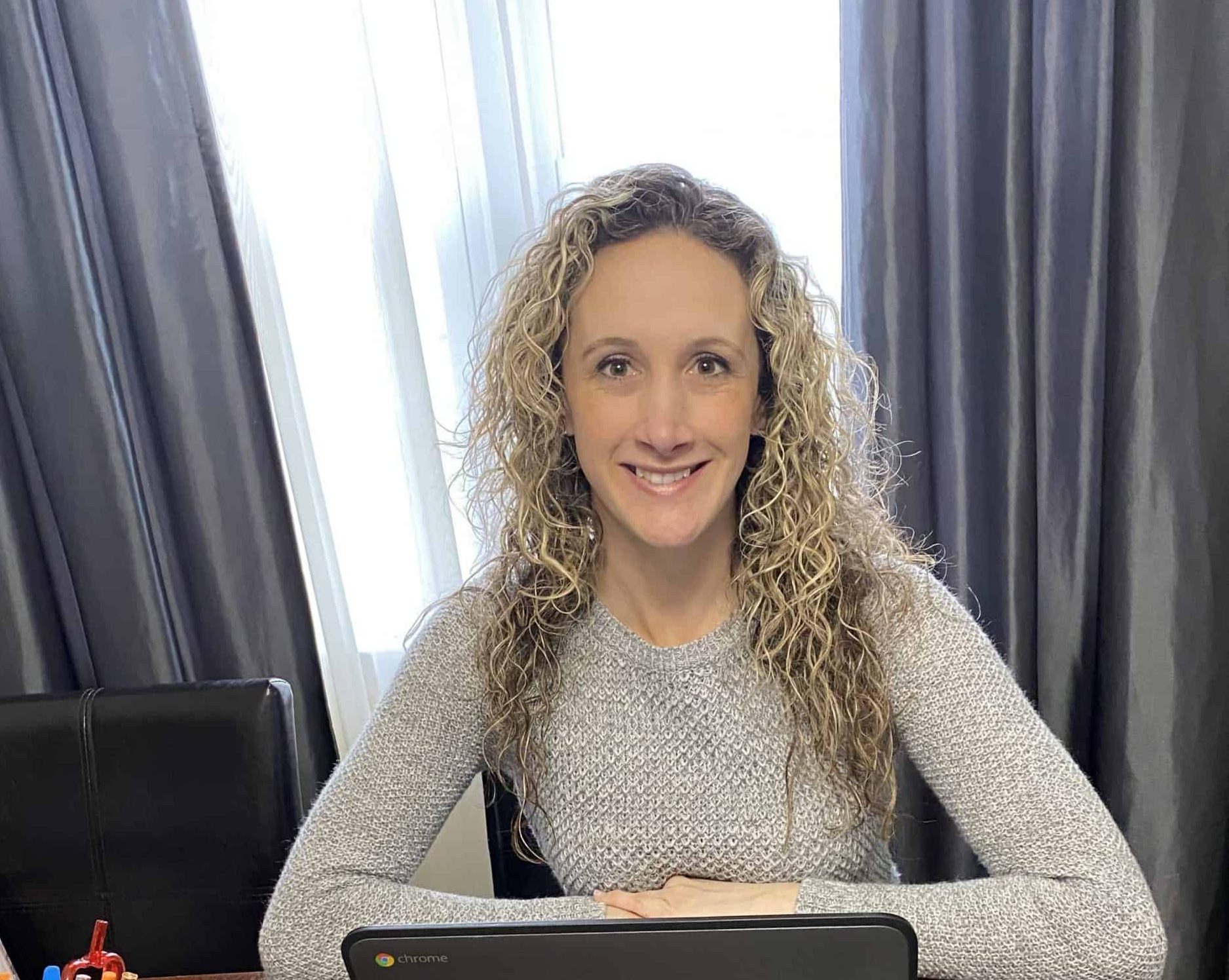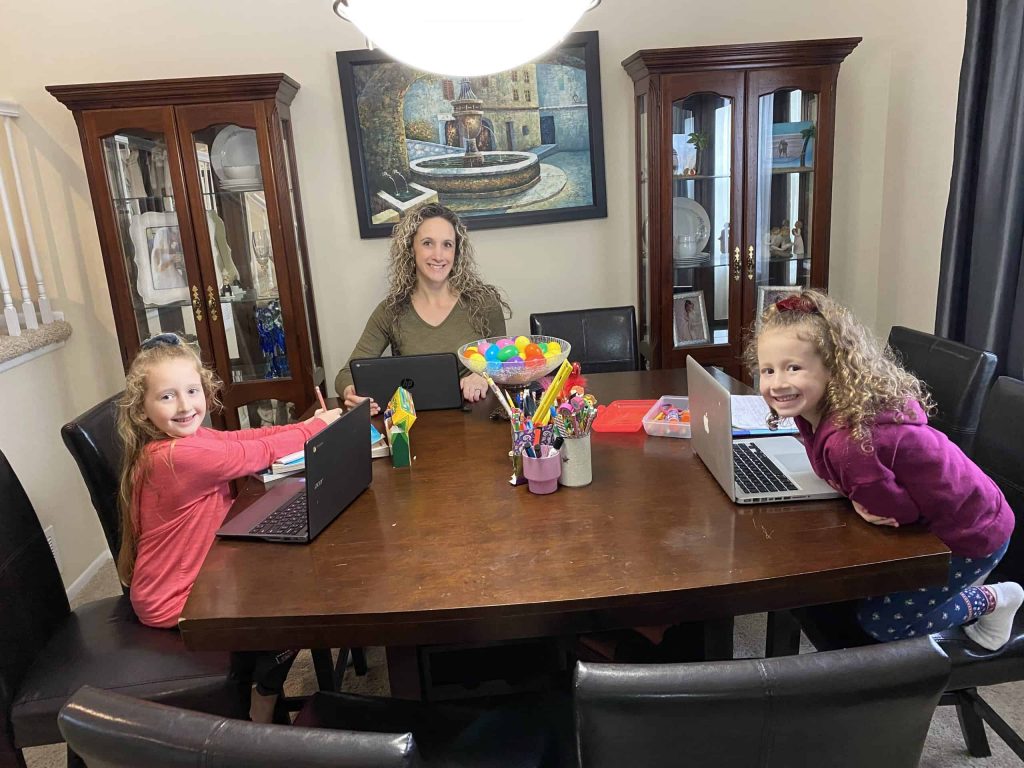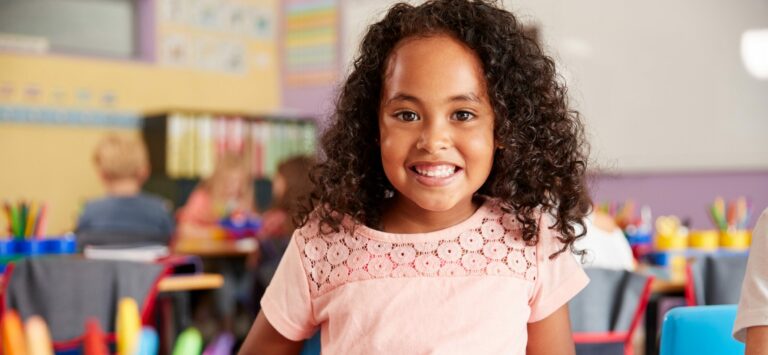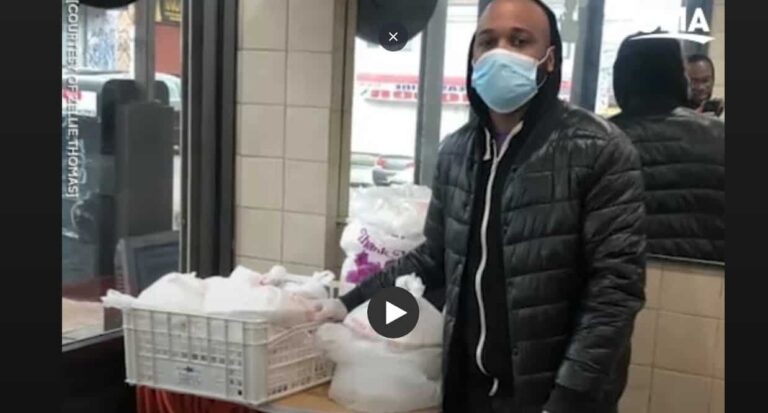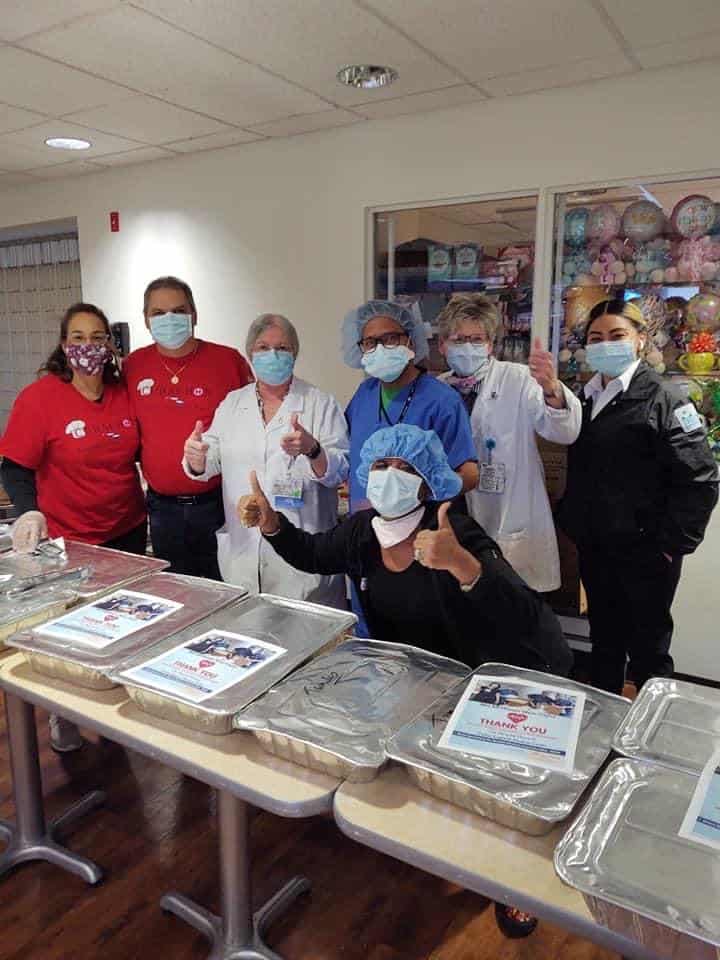By Nikki Silva, Carteret teacher & Milken Award winner
We are making history. Someday in the future, students will be learning about the “Quarantine of 2020” and how schools were closed and students learned from their homes. This is a scary and unpredictable time for families. Fortunately for us, the parent/teacher/child communication that our town has shown during this time is incredible. I truly have never felt closer to my students and parents.
The week of March 9, the buzz started about the closing of schools. Teachers started to get basic plans in place in preparation. With the COVID-19 virus on the rise, on Friday the 13th, ironically enough, a group of teachers and myself met for about two hours at the Board of Education office with the assistant superintendent to come up with a collaborative 10-day lesson plan in case schools were needed to close down.
Afterward, we went back to our classrooms and had our morning meeting. Many students had questions about what was happening, and my co-teacher and I put them at ease by listening to their concerns and educating them about the basic facts of the situation.
Later, we packed them up with their essentials, and planned for the inevitable phone call that schools in our town would be closing. Luckily, most students in third grade are already part of a Google classroom, so having work sent out to them is something they feel comfortable with. Over the weekend, everyone was notified that schools were closing as of Monday, March 16.
Our town hit the floor running. All students from grades one and above are given the opportunity to get a chrome book, so we can be sure that everyone has access to the material we are sending out. Grades 1-5 are now teaching from a direct instructional model through Google classroom.
Students are also given the option of still getting breakfast/lunch from our school grounds during the week. Carteret is offering social emotional support through group or one-on-one counseling sessions through our use of Pathways and Guidance. Social workers are checking in on families to ensure that all their needs are being met. OT, PT and speech are also being provided for students who were previously receiving these services. ESL teachers are translating all work so that students and parents can be as comfortable as possible with the material being sent home.
I had always used Class Dojo, but now more than ever it became critical to keep my parents abreast of any new information I receive and just to stay in contact. Parents have been so cooperative and supportive during this time. I have to admit, I am loving the communication!
By utilizing Zoom, my co-teacher and I are able to still hold morning meetings with the students. This was a favorite time for all of us, when we got to greet each other using sign language, saying “good morning” in a different language or even adding some rhythm into it and using our hands and feet. We greet one another, say the Pledge of Allegiance, our Rambler Pledge, and then get to share what is going on in our lives. It is like a ray of sunshine to see our little munchkin’s faces on the screen. I am beyond proud of these boys and girls for all the hard work they have been handing in daily and for going with the flow during these uncertain times.
After the meeting, students hand in their morning work, which is something that we always had in class, too. This is just a small workout for our brains as we begin the day. Then students get to watch us teach a lesson each day using Screencastify. The lesson explains what they will be practicing for the day. Sometimes I use Screencastify to show the students their math books and to help them better understand the fraction lessons. Other times, I am writing on our white board from my playroom at home, which I brought into the living room to teach writing strategies and how to cite evidence.
Our remote learning environment has made for great practice with higher order thinking questions and project based learning. The students love Flipgrid where they get to respond in a video. This gives me the opportunity to pose a higher order thinking question from the novel we have been reading and have them respond through a video. It really gives students a different platform to express themselves.
Other years, after reading the novel, “The Magic Tree House – Hour of the Olympics,” we organize Olympic games for the students to experience. Now that students are learning from home it gives us the chance to challenge them to brainstorm their own Olympic game, create it, and explain how it works.This is project-based learning at its best. With the use of Flipgrid, students are able to comment and ask questions on other student’s work. It brings feedback and productive discourse to a new level.
I have two daughters at home that help add to the lessons that I teach my students every day. Both girls have class on the computer, as well. We have turned our dining room into our work stations. My youngest goes to St. Joseph School PreK4 in Carteret and her teacher Zooms with them for an hour and a half each day. They sing songs, go over their alphabet, numbers, and writing. My oldest is in second grade and attends a public school in Clark. She gets a list of assignments and then is left to complete them. She is fine doing them on her own, but the teacher in me wants to discuss them with her and go over concepts that she is learning. She is an avid reader, who is always pointing out spots in her novel that could make a good lesson for my students.
Although we are really getting the hang of remote learning, I miss seeing my students little faces in person. So the other day, my girls and I took a drive to visit each of them. We taped signs to my car and we drove to every student’s home. I notified parents previously to let them know we would be coming. I really wanted to look at each child and let them know how proud I was of them.
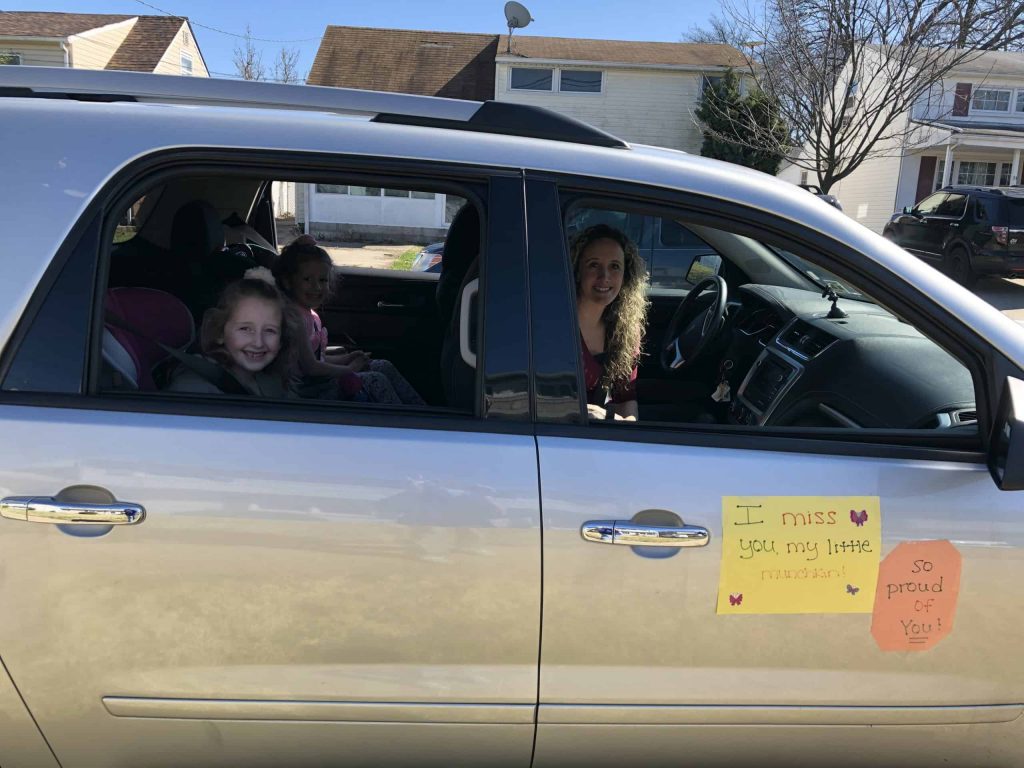 I decided to make “connection rocks” with them. My daughters and I gathered a good amount of flat rocks and after we chatted outside with the student and their parents, we tossed them a rock to design. Whenever we miss one another, we are going to hold our rock close to our heart. Then when we get back to class, we are going to create a rock garden. Students loved this idea and have already started to send me pictures of their rocks. Some students wrote words on their rocks to symbolize how they felt about our class. “Family” and “love” are just a few that show how connected we really are.
I decided to make “connection rocks” with them. My daughters and I gathered a good amount of flat rocks and after we chatted outside with the student and their parents, we tossed them a rock to design. Whenever we miss one another, we are going to hold our rock close to our heart. Then when we get back to class, we are going to create a rock garden. Students loved this idea and have already started to send me pictures of their rocks. Some students wrote words on their rocks to symbolize how they felt about our class. “Family” and “love” are just a few that show how connected we really are.
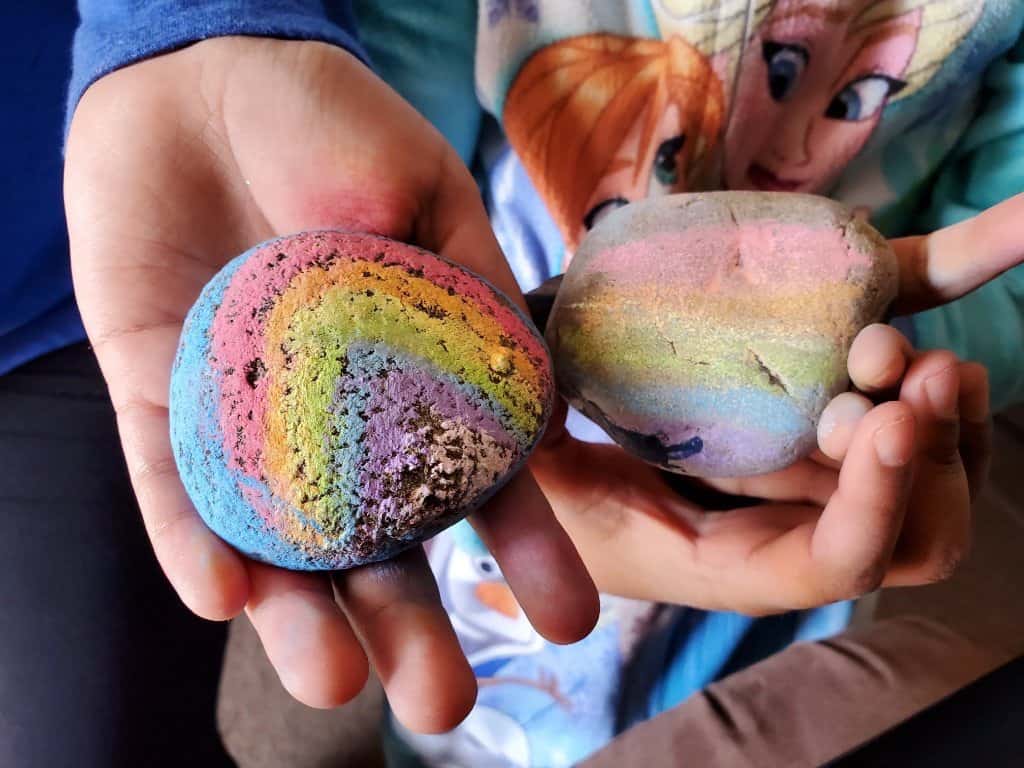 Although this had been such a trying time for our nation and all of us, it is still heart-warming to know that these children still feel a connection to our classroom and each other.
Although this had been such a trying time for our nation and all of us, it is still heart-warming to know that these children still feel a connection to our classroom and each other.
This unpredictable and scary situation in our lives has forced educators to explore different avenues to educate students. This has given students a different perspective of learning; not all learning has to take place inside the classroom. I feel it has helped students use another platform to explore lessons and to be able to think creatively and use their surroundings in their learning process.
This time in our lives will greatly shape the face of education, and I truly think it will make us stronger. Through this time, we have seen students rise to the occasion and exceed expectations.
Silva and her students were featured in a January NJEA Review article. She also has shared her tips for creating a “Cool Down Bookbag.”

